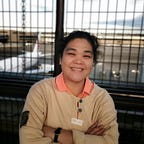SHRM Tech 2017: The Impact of Digital Technology on HR
Written by Grace C. Sorongon
It is always a pain to travel to India. Since there is no direct flight connection from the Philippines, normally, the layover is via Kuala Lumpur, Singapore, Thailand, or Hong Kong. The flight connection from these countries is at night, thus, arriving India normally at midnight. Aside from the pain, I couldn’t wait for the plane to land, have my good night’s rest, and enjoy my Indian breakfast the following morning.
What drives me to keep on visiting India, though, is my thirst for learning. Hence this trip was no exception. I waited with so much anticipation what the conference, supposedly, would bring me, noting that the underlying theme of the conference was on HR technology. The topics were close to my heart. As a sucker for learning and technology, I expected that I could learn new HR tools, as well as best practices and trends. It was a disappointment, however, since most of the discussions in the conference, I already heard from previous conferences.
Most of the topics were not new to me, like, what the profile of the workforce would be in the next 10 years? In this interconnected world, what organizational structure would be like in the next coming years? So much is changing, considering the free flow and sharing of information and feedback; there is more transparency when it comes to establishing goals; and people are rewarded for skills, knowledge and abilities, not position. Furthermore, the hierarchical organogram, which HR practitioners are used to, will no longer represent organizations of the future. Instead, organizations will be more spiral or circular to represent collaboration and cooperation among different units. The conference also talked about the shift towards employee or user experience. John Clements had a session two years back about user experience. User experience revolves around understanding the market that we serve so that it can be understood and addressed better.
It would seem that, when it comes to using technology and tools, HR is seen as a laggard. The focus, nowadays, is more on talent and how technology could drive their performance. HR technology is being disrupted and this must be reinvented to address its convergence with the work itself. For instance, is it adaptable by mobile hardware like phones? If it is not, then companies would need to rethink embracing such technology. Mobile phones are now very much part of work and, therefore, its use as a tool would have to be mainly considered when embracing new technology.
Even this discussion was not new. This was taken up in previous conferences I attended, forecasting that more and more people would use smart phones. Overall, I did not learn anything new. But having said that, I realized that the most important thing I got from previous conferences was the impetus for me to drive change in my organization.
Please visit and join the John Clements Talent Community
About the author:
Grace was the 2013 president of People Management Association of the Philippines. She has been working with John Clements Consultants for more than three decades now. She is a senior vice president and is in charge of various corporate projects and steering these projects towards completion. She also manages the operations of Professional Staffers, a business unit within the John Clements group.
